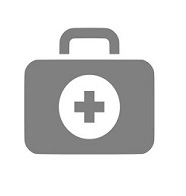|
Pulmonary embolism A pulmonary embolism is a blocked blood vessel in your lungs. It can be life-threatening if not treated quickly. See a GP if:
These can be symptoms of pulmonary embolism. You may also have pain, redness and swelling in one of your legs (usually the calf). These are symptoms of a blood clot, also called deep vein thrombosis (DVT). Call 999 or go to A&E if:
These could be signs of a pulmonary embolism or another serious condition. Treating a pulmonary embolism If a GP thinks you've got a pulmonary embolism, you'll be sent to hospital for further tests and treatment. At hospital, you'll probably be given an injection of anticoagulant medicine before you get any test results. Anticoagulants stop blood clots getting bigger and prevent new clots forming. If tests confirm you have a pulmonary embolism, you'll continue with anticoagulant injections for at least 5 days. You'll also need to take anticoagulant tablets for at least 3 months. You should make a full recovery from a pulmonary embolism if it's spotted and treated early. A pulmonary embolism often happens when part of the blood clot dislodges itself from your leg and travels up to your lungs, causing a blockage. There are measures you can take to lower your risk of getting a pulmonary embolism. If you're being treated in hospital for another condition, your medical team should take steps to prevent DVT. A DVT can occasionally develop on journeys lasting more than 6 hours. To reduce your risk of getting a travel-related DVT: Do
Don't
 BestCareCompare | ||||||
| Find GP's near you.. Find local GP's and filter for personalised care. Check CQC ratings and review scores to help make the best choice for you... |
| Find Great Doctors... |
|
|
Doctors near London (See Full List) |


